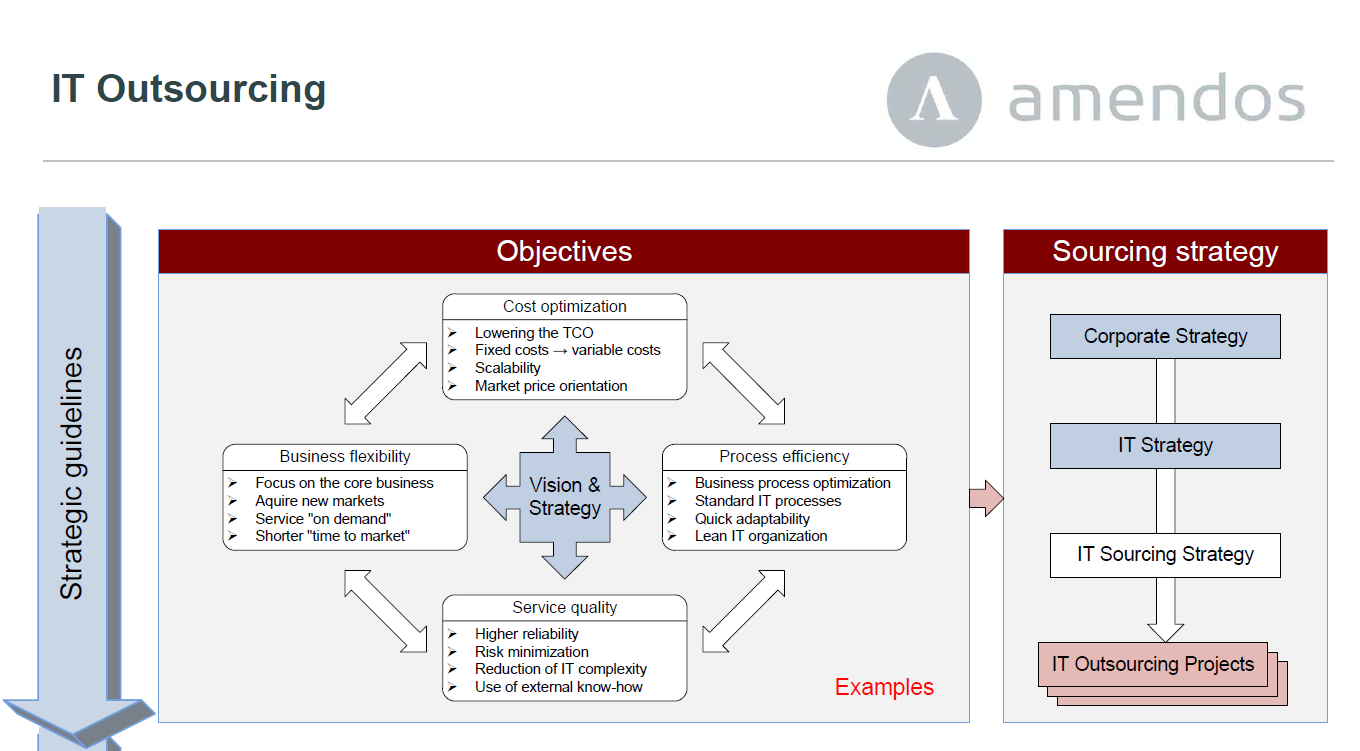Introduction
Successful implementation of an IT Outsourcing project requires careful planning and execution. Our “Poster – IT Outsourcing” gives you an overview of the various phases and associated activities of such a project. Key phases are the strategic specifications, the actual outsourcing project and regular operations phase.
Objectives and Approach
The decision of a company to hand over certain IT services to one or more service providers is often made in order to achieve cost savings. A second reason often named is the concentration on the core business. To ensure that outsourcing IT services is actually a commercial success, a methodical approach is required. The basic structure for this is provided by various outsourcing frameworks on the market. The only international standard is ISO 37500, which is why we have based our phase model on ISO 37500. This also applies analogously to the structure in our IT outsourcing poster. In our view, it is essential to derive outsourcing projects from the company’s own strategy. For this purpose, the strategy must be concretized and strategic goals must be clearly formulated. The subsequent outsourcing results (offers from various bidders, services provided and their quality in the operating phase) are to be measured against these.
Project Phases: Concept & Tender Documents
The outsourcing project starts with an as-is analysis in which, in particular, processes, the current service portfolio and the required quality of the services are recorded. Furthermore the IT technology used, operating personnel, costs and other general conditions have to be analysed as well. In the conceptual design phases (rough concept, detailed concept), services to be provided externally in the future are specified. Required organizational and technical interfaces between the customer and the service provider must also be specified. The same applies to compliance requirements and mechanisms, governance rules and requirements for the interaction of the parties, and the remuneration model. In the request-for-proposal and award phases, corresponding specifications must be drawn up and tender documents compiled. These are then sent to selected suppliers. The latter are then invited to submit a suitable offer.
Project Phases: Request for Proposal & Transition
The offers are to be compared and then negotiations are to be conducted with selected bidders. If necessary, additional information is to be exchanged or generated during this phase (for example, through supplementary due diligence). Once the contract has been concluded with one of the bidders, the latter must then make preparations for service provision as part of a transition project. Finally, after successful acceptance of its services by the client in the project, it can then take over regular operations.







